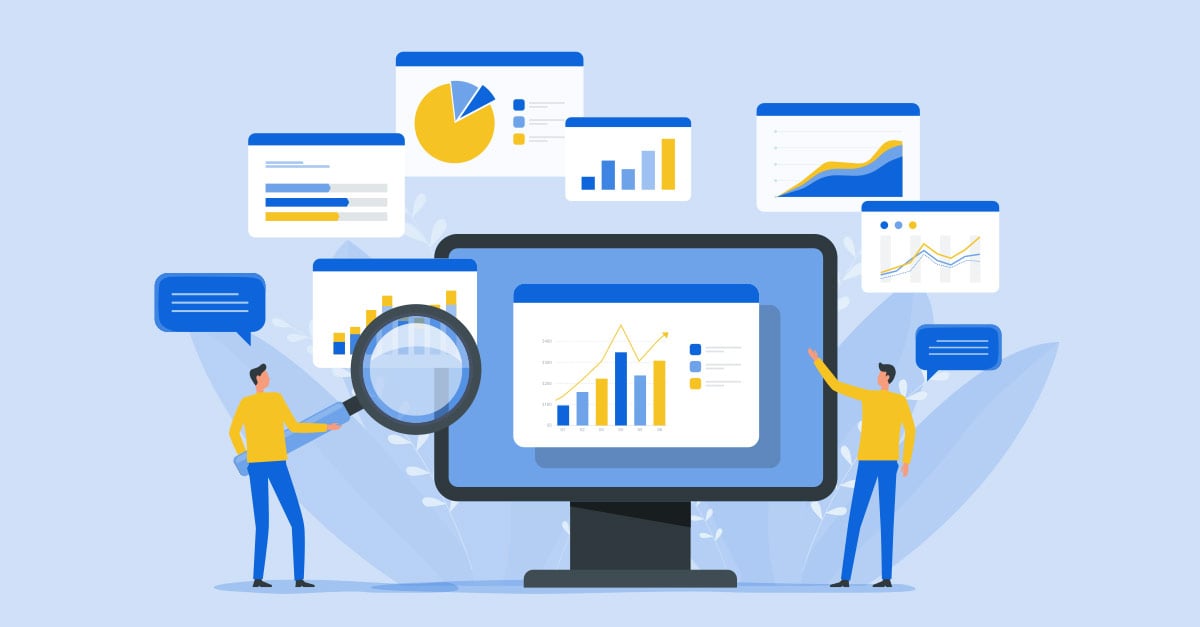
- Home
- Global Payroll
- The Rise of Payroll Analytics: Unlocking the Power of Data
The Rise of Payroll Analytics: Unlocking the Power of Data
Published :

Payroll management has evolved significantly with the integration of analytics. Previously focused on ensuring accurate and timely employee payments, the function now serves as a strategic tool for businesses. Data analytics enables deeper insights into employee compensation, employee productivity, and financial management, transforming global payroll from a routine task into a critical component of strategic business planning. This shift empowers companies to make informed decisions, optimize operations, and enhance overall business performance, while also improving employee experience.
Predictive modeling has become a pivotal tool in forecasting workforce costs, fundamentally changing how companies approach financial planning.
By leveraging predictive payroll analytics, organizations can anticipate workforce expenses with remarkable accuracy, allowing for a more strategic allocation of resources. This forward-looking approach not only enhances budgetary precision but also equips businesses with the ability to adapt to market changes and labor demand with agility.
Predictive modeling serves as a bridge between historical data and future financial performance, enabling companies to identify trends, assess risks, and seize opportunities. This method transforms the traditionally reactive nature of financial planning of payroll costs into a proactive strategy, optimizing operational efficiency and contributing to sustained business growth.
Benchmarking payroll performance against industry standards is crucial for enhancing operational efficiency and maintaining competitiveness. By measuring payroll metrics against established benchmarks, companies can identify areas of improvement and strategize on how to optimize their processes. This comparative analysis enables organizations to understand where they stand among their peers and the industry at large, highlighting opportunities for innovation and cost reduction. Benchmarking acts as a guide for implementing best practices, driving performance enhancements, and ensuring compliance with regulatory requirements. It fosters a culture of continuous improvement, encouraging companies to elevate their payroll software operations to meet or exceed industry norms, thereby bolstering their market position and operational excellence.

Leveraging data for payroll software process optimization is a strategic approach that taps into the power of data analytics to enhance efficiency and reduce costs. By analyzing payroll data, companies can pinpoint inefficiencies, identify patterns of overspending, and uncover opportunities for streamlining operations. This data-driven methodology allows businesses to make informed decisions, optimizing payroll processes for greater accuracy and cost-effectiveness. It not only minimizes errors and compliance risks but also enables a more agile payroll software that can adapt to changing regulations and workforce dynamics.
Furthermore, Incorporating HR analytics into payroll process optimization offers profound insights into workforce management, directly influencing payroll efficiency. By analyzing trends in employee performance, turnover, and engagement, businesses can make data-driven decisions that not only streamline payroll software operations but also enhance workforce satisfaction and productivity.
The impact of real-time analytics on payroll decision-making is transformative, offering a significant leap in operational agility and strategic foresight. Tools like BInGO provide immediate access to data, enabling payroll managers to make quick, informed decisions.
Real-time analytics illuminate trends and anomalies as they happen, facilitating proactive management and strategic adjustments. The introduction of a payroll dashboard amplifies these benefits by centralizing key financial and employee metrics in an intuitive, visual interface. With this Payroll dashboard, managers can easily monitor payroll accuracy, track employee hours, oversee leave balances, and analyze employee compensations in real-time. Thus, integrating a payroll dashboard within real-time analytics frameworks is a cornerstone of modern payroll management strategies, providing the critical insights required for agile decision-making.
Traditionally, generating payroll reports was a time-consuming and error-prone process, often hampered by manual data entry and complex calculations. However, technological advancements have revolutionized this process, making it faster and more reliable. Automated tools and software, such as Payce, have streamlined data collection and analysis, providing accurate reports with minimal effort. These innovations not only save time but also provide deeper insights into payroll data, enabling better strategic planning and operational improvements.
Benchmarking payroll performance against industry standards is essential for organizations aiming to enhance efficiency, reduce costs, and maintain regulatory compliance. By comparing global payroll metrics with industry best practices, businesses can identify weaknesses, drive innovation, and implement strategies to optimize their payroll software and payroll services.
One of the primary benefits of benchmarking is uncovering inefficiencies in payroll operations. Many organizations struggle with inaccuracies, compliance risks, and administrative burdens. By measuring key payroll indicators—such as processing time, cost per payroll run, and error rates—against industry benchmarks, companies can pinpoint specific areas that require improvement. For instance, a business may realize that its payroll error rate is higher than the industry average, indicating the need for automation or enhanced validation processes in its payroll software.
Comparative analysis allows organizations to adopt best practices and emerging technologies used by top-performing companies. Modern payroll services now incorporate automation, AI-driven fraud detection, and blockchain-based payroll tracking to enhance security and efficiency. Businesses leveraging benchmarking insights can stay ahead of the curve by integrating these innovations into their global payroll management strategies.
Benchmarking helps companies streamline their payroll services, reducing unnecessary expenditures. By understanding how competitors optimize costs, such as outsourcing certain payroll functions or utilizing advanced payroll software, organizations can implement cost-effective solutions. Studies show that companies that regularly benchmark their global payroll operations experience up to a 15% reduction in payroll processing costs, contributing to overall financial health.
Non-compliance with labor laws and tax regulations can lead to legal repercussions and financial penalties. Benchmarking provides insights into how leading organizations ensure regulatory adherence across multiple jurisdictions. By comparing compliance strategies, businesses can fortify their global payroll frameworks, mitigate risks, and maintain seamless international payroll operations.
Organizations that leverage benchmarking can achieve:
By consistently benchmarking against industry leaders, businesses can transform their payroll departments from administrative units into strategic powerhouses that drive operational success.
Breaking the dependency on external providers for payroll analytics marks a shift towards greater autonomy and control for businesses. With the advent of advanced, easily integrated, user-friendly analytics tools, companies are now equipped to conduct sophisticated payroll analysis in-house. This transition supports a more agile and informed approach to global payroll management, fostering innovation and competitive advantage by leveraging internal resources and expertise.
Innovations in payroll analytics are revolutionizing how businesses approach payroll management, bringing unprecedented precision and insight into the process.
In conclusion, the integration of analytics into payroll Solutions signifies a fundamental shift from traditional administrative tasks to a strategic, data-driven approach. Tools like BInGO have revolutionized the way organizations forecast employee compensation costs, optimize global payroll processes, and benchmark performance against industry standards.

All Rights Reserved. © Copyright 2024. Ramco Systems.